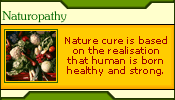|
Many theories of sleep have been advanced to explain the temporary
loss of consciousness which we know as sleep. The oldest theory
is that sleep is induced by a reduction in the blood supply to the
brain or at least to conscious centres. This is known as ischemic
theory. Even the ancient Greek physicians were aware that the carotid
artery was in a way concerned with the onset of sleep. The name
itself expresses this belief. The Greek word ' Karotides' for carotid
arteries is derived from karoo which means 'put to sleep.' In modern
times, the drowsiness after a meal, presumably due to the diversion
of blood from the brain to the digestive organs, is cited in support
of the ischemic theory.
Another important theory about sleep is the chemical theory. As
a result of experiments in the metabolism of sleeping subjects,
it is considered that the fatigue inducing sleep may be a mild form
of blood poisoning or toxaemia. This " poisoning" is believed
to be brought on by the expenditure of energy during the waking
hours.
According to this theory, every contraction of a muscle and every
impulse passing through the brain or the nerves breaks down a certain
amount of tissue. The debris from broken down tissue is then thrown
into the bloodstream. In the waking state, much of the waste from
broken down tissue is got rid of through the natural eliminating
processes of lungs, kidneys, bowels and skin. But there comes a
saturation point when there is such an accumulation of waste that
it cannot be disposed of by these processes and it then invades
the grey matter of the brain. In such an eventuality, mental and
physical altertness are impaired. It is nature's warning that the
waste product must be reduced to replenish the lost energy. So we
get tired and the urge to get sleep becomes irresistible.
During sleep, the cells and tissues that break down to produce
toxic waste become less active and the production of toxic waste
is vastly reduced. Simultaneously, constructive activities take
place within the body during sleep, which rebuild the broken down
tissue.
Another theory places a sleeping centre in the hypothalamus. Many
of the bodily changes in sleep such as constriction of pupils, reduced
frequency of heart beat, increased gastric tone and secretion are
manifestations of the activity of hypothalamus nuclei, especially
parasympathetic centres. Perhaps some of the sleeping pills affect
this centre in the brain.
Although the various theories have certain amount of experimental
evidence to support them, none has really solved what is the most
mysterious process in our lives. All we know is that sleep substitutes
constructive measures for the destructive processes of our waking
hours. We cannot live without sleep.
|


















